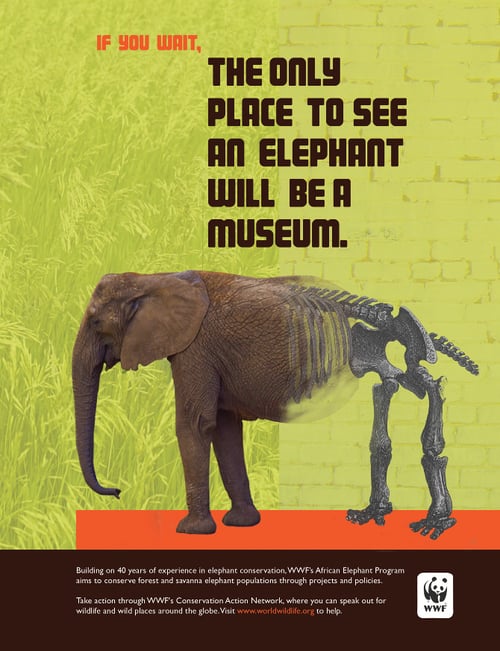When You Should (And Shouldn’t) Use The StoryBrand Failure Bucket
StoryBrand. You gotta love it! This simple framework makes even the most complicated of messages easy to understand, which, in turn, translates to more leads and sales!
It’s easy to understand why the StoryBrand framework is so successful (we personally have some great case studies to highlight just that). But actually using the framework? That can be significantly more complicated.
Using your BrandScript to create effective content requires a clear strategy. While it’s easy to copy and paste bits of your BrandScript all over your website, it’s a lot more difficult to put the right pieces and the right order.
Many well-intending businesses misuse the StoryBrand framework when creating content. They have all the right content. They just don’t use them in the right places. As a result, their StoryBranded content doesn’t live up to their expectations. They don’t get results, and they’re left feeling frustrated and cheated.
As a StoryBrand Certified Copywriter, I’ve personally seen a lot of skilled entrepreneurs and writers misuse their StoryBrand buckets. And the biggest offender? Failure, aka the Tragic Ending.
If you’re familiar with StoryBrand, you already know that the tragic ending is a brief list of the biggest risks your customers face when they choose not to work with your business. It’s often the flip-side of the successful ending and can include items such as:
- Spend thousands on products that don’t work
- Continue to feel frustrated and overwhelmed trying to solve problems on your own
- Work with a business that doesn’t keep your best interest at heart
Your failure bucket will vary depending on your unique business, but one thing is the same for each brand. If you use the failure bucket the wrong way, it could cost you everything.
The Dangers Of Misusing The Failure Bucket
The failure bucket has a crucial role in the StoryBrand BrandScript: It creates a sense of urgency. For most businesses, this is a great asset. A sentence that makes your customer feel like they need to buy your product/service now? Sounds like a dream come true!
Unfortunately, there’s a downside to this golden goose. If used too often, that same sense of urgency can actually drive customers away from your product.
Let me give you an example. This is an ad from the World Wildlife Fund, a nonprofit organization dedicated to protecting and conserving endangered species in their natural habitats. Their mission is positive. Their intentions are pure. But their ads? Well, they speak for themselves.

Many nonprofit groups like WWF rely heavily on tragic endings. Logically, it makes sense. They’re fighting a problem with real, horrible consequences. They need people to realize how important their mission is.
But here’s the problem. These ads make you feel horrible, especially if you’re an animal lover! Just look at that elephant. It’s downright depressing. The intent behind the ad is almost too effective, leaving viewers paralyzed with guilt and sadness.
As a mission-driven millennial with a passion for animals and a few extra pennies lying around the house, I’m a perfect fit for WWF’s target market. But ads like this one don’t drive me to support the program. They make me run away as fast as possible!
This clearly illustrates the cost of misusing the failure bucket. When used the right way, this content could drive urgency and encourage people to take that extra step and donate. When used incorrectly, you lose customers altogether.
So how can you use the failure bucket the right way? And when should you avoid it altogether? Here’s what I have found from years of experience…
When You Shouldn’t Use The Failure Bucket
1. When it’s the main attraction.
Here’s where those WWF ads (and so many others) go wrong. When used in moderation, the failure bucket is a great way to highlight the importance of your product or service. When it’s the most prominent part of your web page, ad, offer, or other piece of content, you run the risk of scaring people away.
How much more effective would that ad have been if showed a little girl spotting an elephant on a safari, her face glowing with excitement? The header could read: “Because Magic Shouldn’t Go Extinct.” Now we’re using aspirational imagery and the philosophical problem to highlight the desire of the character to pass along their love of elephants to future generations. The urgency is still there, but the viewer is left feeling warm and fuzzy — and much more likely to support the cause.
2. When there isn’t really a tragic ending.
I know what you’re thinking. “How can there not be a tragic ending? Every character pays a price for not using the guide! Otherwise, it wouldn’t be in the framework.”
And, yes. I agree. There’s always some sort of failure. But here’s what I mean: not all failures are significant failures. Think about a business that makes soft drinks. Their potential failures could include:
- Continue to drink dull, flavorless beverages that leave you bored.
- Feel like you’re missing out by not drinking something fun.
- Miss out on that lunchtime pick-me-up and feel drowsy more quickly.
All of these are legitimate failures, but you’re not going to spend thousands of dollars to avoid them. If the soft drink business relied heavily on these failures, their end messaging would lose its relatability. The business would be much better off highlighting the fun benefits of the product.
3. Before you highlight the internal problems.
You wouldn’t take the Bar test without studying beforehand. So don’t expect your customers to understand the failure bucket before they fully internalize the problem!
There’s a good reason that the tragic ending comes near the very end of the BrandScript. This is because failure-based content naturally flows well after you have painted a clear picture of the problem. Failure is much easier to digest when you’re emotionally invested in the problem at hand — and fully aware of all the goodness you give up when you choose to go a different route.
When You Should Use The Failure Bucket:
1. When the risks are high.
So we’ve highlighted all the problems misusing the failure bucket can cause. But leaving it out entirely also isn’t a good move, particularly if your customer has a lot to lose.
The is especially the case for characters faced with a high-risk situation, like a debilitating medical, financial, or psychological problem. Nonprofits like WWF also fall into this category.
While it’s not ideal for these kinds of businesses to showcase the failure bucket front and center on their site, you should still weave it into content subtly so your customers understand the importance of partnering with you. Otherwise, they might leave wondering, “What’s the point?” or, “Why should I care?”
2. When there’s a deadline, time limit, or expiration date.
You’ll have to look far and wide to find a “Big Sale!” ad that doesn’t include a failure sentence like, “If you don’t act now, you’ll miss out on savings of…”
There’s a very good reason for this. If you’re offering a special or limited-time deal, urgency is something you need to build. Because the risk of not purchasing is typically minor, hitting the failure bucket hard for time-sensitive content is typically a safe bet.
3. When they need that extra push.
An excellent strategy to follow when using the failure bucket is to hit it harder the farther your lead is down the Buyer’s Journey. When a potential customer first stumbles onto your site, they might not be ready to purchase yet. But, if they’ve downloaded an offer and received several emails, that final Failure push can encourage them to make the sale.
When creating lead nurturing email series, I typically work the failure bucket lightly into the second email and more heavily into the final email. This provides leads with varying levels of persuasiveness to get them to convert into paying customers.
Every company, including nonprofits, should be known for one thing – preferably one thing – that makes them stand out from a crowd of similar organizations. Once you have that nailed down, you will be able to craft a message tailored to your audience.
Need Help Creating Content From Your BrandScript?
By now, you’ve probably seen first-hand how challenging it can be to use your BrandScript the right way. It’s so much more than just jotting down what your customers may feel. You need a lot of strategies, insider knowledge, and experience to transform your BrandScript into powerful, persuasive, lead-generating content.
So let us do the hard work for you!
At ROI Online, our team of StoryBrand Certified Copywriters specializes in creating the best content from your BrandScript. With a passion for storytelling and proven sales-producing strategies, we can help you clarify your brand’s message so you can get more from your content.
Check out our ROI QuickStart and find out how we can help your business grow!





